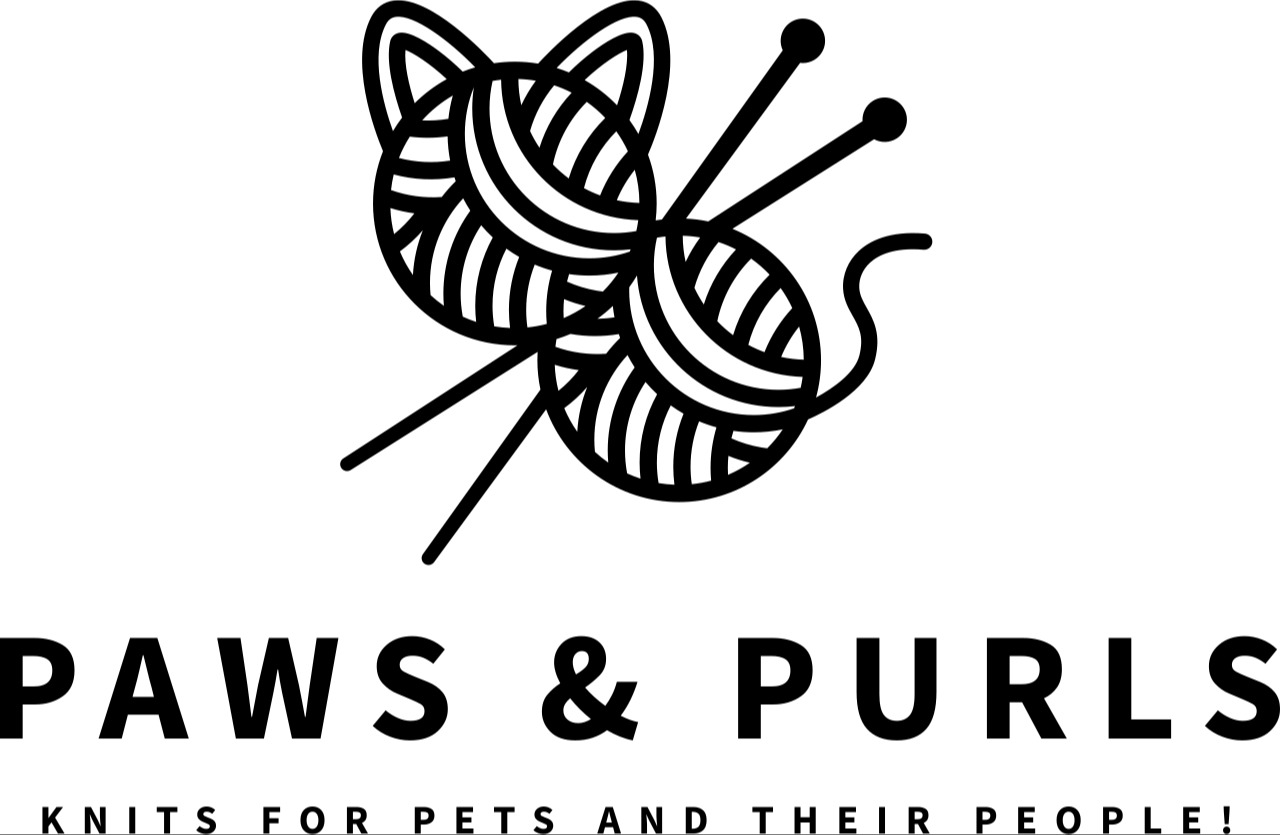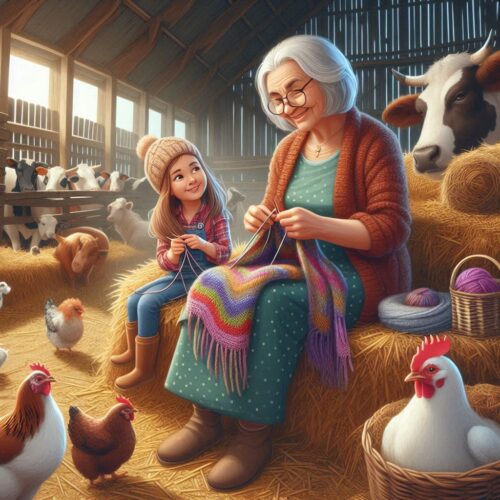I came across a pattern for a sweater for a chicken the other day, and that got me thinking about knitting for the farm! It’s not just a quirky idea; knitted items can offer real benefits for farm animals like chickens, horses, cattle, pigs, and goats. Whether you’re a seasoned farmer or a new pet owner, integrating knitted accessories into your animal care routine can make a significant difference. Let’s explore how knitted items can enhance the comfort and well-being of your farm pets.
First and foremost, the warmth and comfort factor can’t be overstated. Winter months can be brutal, and that’s where woolly sweaters, blankets, and even knitted leg warmers come into play. These items help maintain body heat, keeping your pets snug and stress-free when the temperature drops.
Protection is another biggie. Knitted items can act as a barrier against harsh weather conditions. Think of leg wraps and head covers for horses—they lock out the cold, mud, and even pesky insects. Chickens, on the other hand, can benefit from leg warmers that fend off frostbite.
Hygiene shouldn’t be overlooked. Knitted items are typically easy to clean, and maintaining a hygienic environment reduces the risk of disease. Imagine knowing that your pigs are not just warm but also lounging on easily washable, germ-free knitted bedding.
Incorporating knitted accessories into your animal care routine isn’t just about keeping them cozy. It’s about enhancing their overall well-being. From customized comfort to protection and hygiene, the humble knitted item can be a game-changer for your farm pets.
Types of Knitted Items for Different Farm Animals
Chickens benefit from nesting box covers, small blankets, and even leg warmers. Nesting box covers keep their nesting areas warm and cozy, especially useful during the colder months. Knitted leg warmers and boots can protect against frostbite, making sure their legs stay warm in extreme temperatures. Toys made from yarn can also provide stimulation and comfort for chickens. Here’s the link to the sweater that inspired this post (it’s a crochet pattern, but I’m sure it could be easily adapted into a knit pattern): Chicken Sweater Crochet Pattern by JasmineArtWorks

Horses can enjoy an array of knitted items, including blankets, saddle blankets, sheets, and leg wraps. Knitted blankets and sheets give an added layer of warmth during those cold spells. Leg wraps protect against injuries and offer additional support. Knitted muzzles and head covers can shield horses from insects and provide shade, enhancing their comfort.
Cattle also have plenty to gain from knitted items. Think about knitted blankets and covers to keep them warm and comfortable during chilly nights. Knitted items can protect cattle from scratches or abrasions and even serve as bedding mats to provide a cozy, hygienic sleeping area.
Pigs can reap the benefits of knitted blankets and protective coats. These keep them warm and comfy, especially in the winter months. Knitted coats also protect pigs from environmental elements and abrasions. Providing pigs with knitted toys or mats can offer comfort and mental stimulation.

Goats don’t get left behind in the knitted fun. They can benefit from sweaters and coats, particularly in cold and wet conditions. Knitted leg warmers protect their legs and prevent injuries from rough play. Extra blankets can provide added warmth during cold spells, ensuring your goats stay cozy and comfortable.
Choosing the Right Yarn and Patterns
Selecting the right yarn and patterns is like laying the foundation for a well-built house; it sets the stage for comfort and durability. When picking yarn, go for options that offer both warmth and resilience. Wool and acrylic blends are top picks, thanks to their combined durability and softness. These materials are not just comfy but also stand up well to the rough-and-tumble life on a farm.
Once you’ve got your yarn sorted, choosing the right patterns is next. Simplicity can be your best friend here. Practical, easy-to-knit patterns should be your go-to, especially if you’re knitting for different types and sizes of animals. Make sure the pattern is functional; it should accommodate the specific needs of the animal it’s intended for. For instance, a cattle blanket pattern should be generously sized and perhaps feature adjustable straps or ties for a secure fit.
Don’t overlook the importance of adapting patterns. Sometimes, what you find in books or online won’t be a perfect match for your animal. Feel free to tweak the pattern to make it work best for your furry or feathered friends. A small alteration can go a long way in ensuring that the knitted item not only fits well but also serves its purpose effectively.
Measuring and Sizing for a Perfect Fit
Getting the measurements right is crucial for knitting items that fit well and are comfortable for your farm pets. The first step is knowing exactly where and how to measure each animal. For chickens, focus on measurements for small blankets or leg warmers. You might want to measure from the base of their neck to the tail for a blanket or around the circumference of their legs for leg warmers.
For larger animals like horses and cattle, measurements for blankets and wraps are key. Take into account the length from the withers to the tail and the girth around the widest part of the belly. This ensures that the blanket covers the necessary areas without being too tight or too loose. For leg wraps, measure around the fullest part of the leg and consider the height from the hoof to just below the knee or hock.
Pattern adjustments come into play based on these measurements. If the blanket or leg wrap turns out too large or too small, you’ll need to tweak the pattern. Temporarily basting the item together and trying it on your pet can help you see where adjustments are required. This saves you the hassle of undoing rows upon rows of knitting if the fit isn’t right the first time.
Comfort is key. It’s not just about making the item; it’s about ensuring it doesn’t irritate or restrict movement. Double-check that the straps, ties, or any fastening methods don’t chafe and are positioned correctly. A good fit means your animal can move around comfortably, whether they are grazing, playing, or just lounging around.
Care and Maintenance of Knitted Items
Keeping your knitted items clean and in good condition is key to ensuring they continue to benefit your farm animals. Proper care starts with following washing instructions tailored to the type of yarn you used. Generally, wool and acrylic blends can be machine washed on a gentle cycle, but always double-check the specific care guidelines on the yarn label.

Hand washing might be necessary for more delicate knitted items. Use lukewarm water and a mild detergent, and avoid wringing out the items to prevent stretching. Instead, gently squeeze out excess water and lay the items flat to dry. This method helps maintain the shape and integrity of the knitted piece, ensuring a longer lifespan.
Repairing knitted items is another aspect of maintenance that shouldn’t be overlooked. Learn a few basic repair techniques, like patching holes or reinforcing weak areas. This can significantly extend the life of your knitted items, saving you the time and effort of creating new ones from scratch.
Regularly inspect your items for signs of wear and tear. Pay attention to areas that experience the most stress, such as the straps on horse blankets. Addressing these issues early on can prevent more significant damage later.
Maintaining knitted items also involves proper storage. Store them in a dry, cool place when not in use to avoid mold and mildew. You might also consider using storage bags to protect them from dust and pests, ensuring they’re ready for use when needed.
Safety Considerations for Knitted Items
Ensuring the safety of your farm animals when using knitted items is paramount. First, make sure to avoid any choking hazards. Loose threads or small detachable parts can be dangerous if ingested. Regularly inspect your knitted items for any loose or frayed threads and secure them immediately.
Comfort and fit are next on the safety checklist. Ill-fitting items can cause discomfort or restrict movement. Always ensure that the knitted sweaters, leg warmers, or blankets fit well but aren’t too tight or too loose. A snug yet comfortable fit reduces the risk of chafing and other injuries.
Material choice also impacts safety. Use non-toxic, animal-friendly yarns to avoid allergic reactions. Animals with sensitive skin can be particularly prone to irritation, so opt for hypoallergenic materials when possible.
Monitor how your animals react to wearing these items. Keep an eye on new knitted accessories to make sure they’re not causing stress or hindrance. Some animals may need a bit of time to get accustomed to new items, so gradual introductions can help.
Lastly, consider the environment. Knitted items should not become waterlogged and heavy in wet conditions. This is particularly important for outdoor animals. Choosing water-resistant yarn or treating the items with a water-repellent solution can help keep your farm pets safe and comfy, regardless of the weather.
DIY vs. Buying Pre-made Knitted Items
Creating knitted items yourself has a unique charm and offers a range of benefits. One major advantage is customization. You can tailor each piece to match the exact size, shape, and needs of your animals. This personal touch ensures that the item is not only functional but also perfectly suited to your pet’s requirements.
Cost savings are another significant benefit of the DIY route. Buying yarn and knitting the items yourself can be more economical compared to purchasing pre-made options, especially if you already have knitting skills and basic supplies on hand.
Besides, the DIY approach allows for creativity. You can experiment with different patterns, yarn types, and colors, adding a personal flair to each creation. The satisfaction of seeing your farm pets cozy and comfortable in your handcrafted items is truly rewarding.
However, buying pre-made knitted items also has its perks. Convenience is a primary factor. If you’re short on time or not confident in your knitting skills, purchasing a ready-made product ensures a quick, professional-quality solution.
Pre-made items often come from businesses specializing in pet accessories, meaning they are designed with animal welfare in mind. These items are typically tested for fit and safety, giving you peace of mind.
Ultimately, it’s about finding the right balance. Some may prefer the satisfaction and personalization of DIY projects, while others might value the ease and reliability of pre-made options. Either choice can add warmth and comfort to your farm pets’ lives.
Seasonal Considerations: Winter Warmth and Summer Comfort
Keeping your farm animals comfortable year-round requires different knitted items tailored for each season. Winter is undeniably the time when knitted accessories shine. Thick blankets, cozy leg warmers, and snug sweaters help keep the chill at bay. For every animal, from chickens to horses, the focus is on retaining warmth. Opt for heavyweight yarns that offer excellent insulation, ensuring your pets stay toasty even during the coldest nights.
During summer, your approach should shift. Lightweight or breathable knitted items come into play. Consider materials that wick away moisture, keeping your animals cool while protecting them from the sun. Knitted head covers can shield horses from harsh rays, and light blankets can still offer protection without causing overheating.
For transitional seasons like spring and fall, have versatile items ready. Medium-weight yarns are great for these in-between periods. Sweaters with removable layers, leg warmers that can be adjusted, and multi-functional blankets provide flexibility to adapt to changing temperatures.
Preparation and anticipation are key. Always keep an eye on weather forecasts and adjust the knitted gear accordingly. The goal is to offer your animals the right balance of warmth and breathability, ensuring they remain comfortable no matter what the season throws at them.

